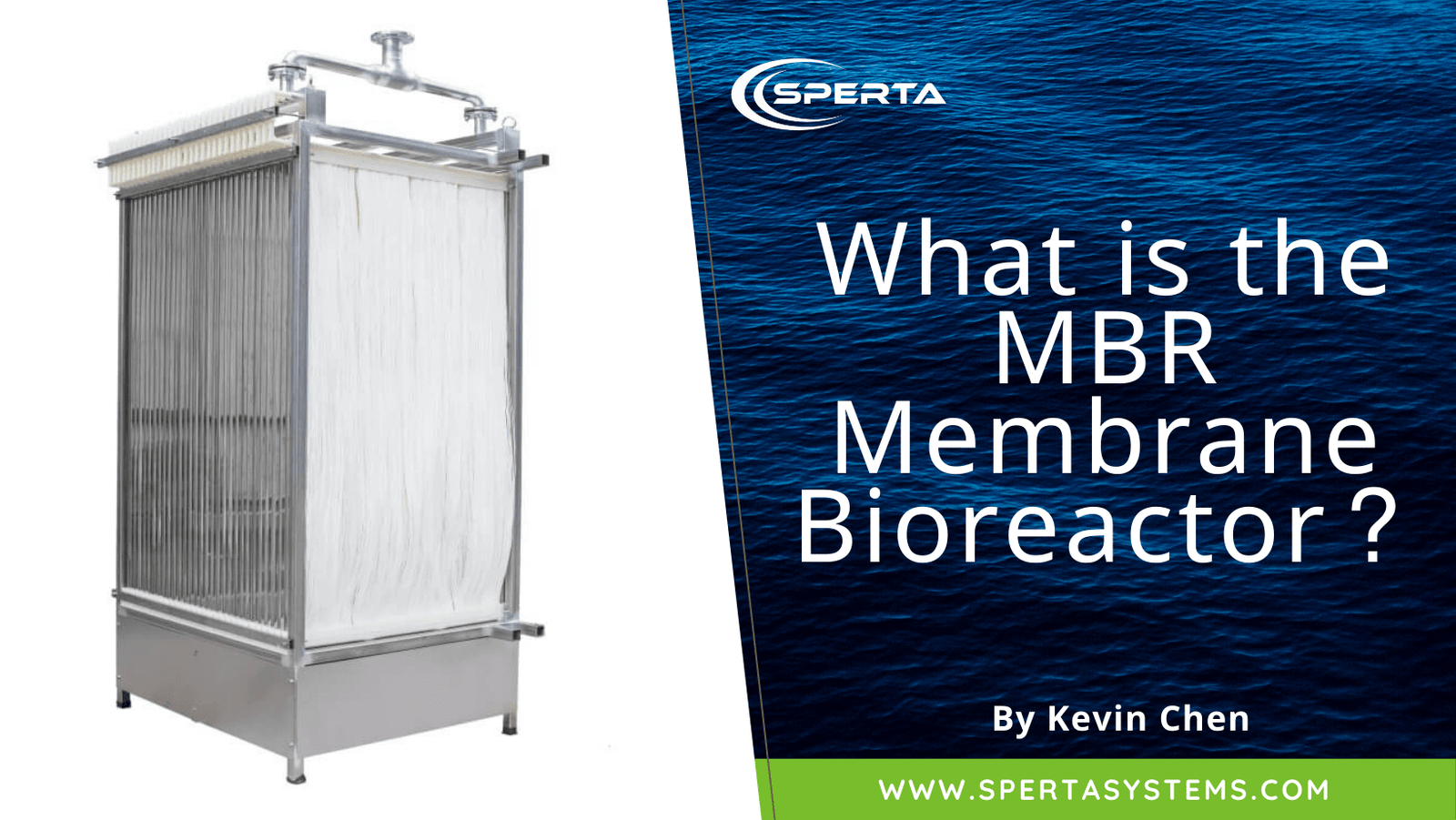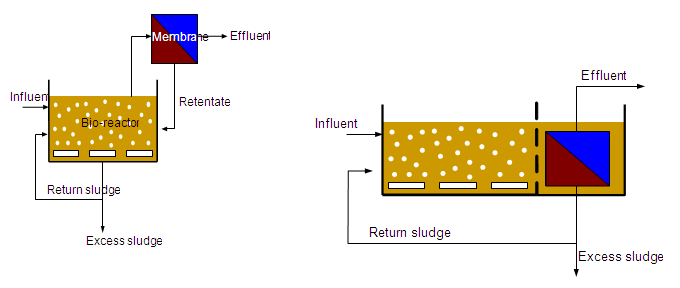Membrane Bioreactor vs. Traditional Treatment Methods: Key Differences Explained
Membrane Bioreactor vs. Traditional Treatment Methods: Key Differences Explained
Blog Article
Exactly How Membrane Bioreactors Are Changing Water Filtration Systems
The introduction of membrane bioreactors (MBRs) represents a significant advancement in the field of water filtration, combining organic treatment procedures with innovative membrane layer filtration modern technologies. This combination not only enhances the high quality of treated effluent yet also addresses city room restrictions, making MBRs especially appropriate for densely inhabited locations. As worldwide water scarcity escalates, the role of MBRs in helping with safe and clean water reuse and lasting water monitoring ends up being progressively important. Yet, the implications of this modern technology extend past effectiveness-- what obstacles and opportunities lie ahead for its prevalent application?
Summary of Membrane Bioreactors
Membrane layer bioreactors (MBRs) represent a significant advancement in water filtration technology, as they integrate biological treatment procedures with membrane filtering. This combination boosts the performance of wastewater therapy by making use of microorganisms to weaken organic contaminants while all at once employing semi-permeable membrane layers to different cured water from put on hold solids and pathogens.
The MBR system typically contains a biological reactor where the microbial populace metabolizes pollutants, followed by a membrane purification device that keeps biomass and enables just tidy water to go through. This double functionality causes greater effluent top quality compared to conventional treatment techniques. MBRs can be run in both batch and continuous circulation settings, providing adaptability in design and application.
They additionally allow the recuperation of water for reuse, hence contributing to water sustainability efforts. Generally, MBRs are at the leading edge of enhancing water therapy performance and quality, showcasing the capacity for ingenious solutions in environmental administration.
Benefits of MBR Modern Technology
The integration of biological treatment with membrane filtration uses various benefits for water purification processes. One of the main advantages of Membrane Bioreactor (MBR) modern technology is its capacity to effectively get rid of both organic and not natural contaminants, bring about top notch effluent. The membranes function as a physical obstacle, avoiding put on hold solids and microorganisms from going through, which improves the overall safety and security and dependability of cured water.
Additionally, MBR systems call for a smaller footprint contrasted to traditional therapy techniques, enabling extra reliable space use. This portable layout is especially useful in city settings where land is restricted. MBRs additionally demonstrate functional flexibility, fitting differing influent top qualities and circulation rates without considerable performance degradation.
In addition, the process supplies enhanced nutrient elimination abilities, specifically for nitrogen and phosphorus, which are vital for preventing eutrophication in getting waters. The decreased sludge manufacturing connected with MBR modern technology additionally translates to reduce disposal expenses, making it an affordable service in the long run - Membrane Bioreactor. Generally, the advantages of MBR modern technology setting it as a leading option for lasting and ingenious water purification systems, attending to both environmental and financial issues
Applications in Water Purification
Applications of Membrane Bioreactor (MBR) technology in water purification are impactful and diverse, attending to different treatment requires throughout multiple industries. MBRs properly integrate organic therapy processes with membrane layer filtering, making them excellent for community wastewater therapy, commercial effluent management, and also potable water reuse efforts.
In local setups, MBRs are significantly employed to improve the top quality of dealt with wastewater, allowing for compliance with stringent discharge policies and assisting in the recycling of water for watering and non-potable usages. Their portable layout additionally makes them ideal for city settings where area is restricted.
Industrially, MBR modern technology is used to deal with process water and wastewater, particularly in industries such as food and beverage, pharmaceuticals, and textiles. By efficiently eliminating pollutants and suspended solids, MBRs help industries reduce environmental impacts while recovering beneficial resources from wastewater streams.
Additionally, MBRs are getting traction in decentralized water treatment applications, where small-scale systems can be released in remote locations or establishing areas. This versatility enables communities to attain lasting water administration services, improving access to tidy water while lowering dependence on conventional treatment approaches.
Instance Research Studies and Success Stories

In another instance, a textile production facility in Bangladesh took on MBR innovation to address its wastewater obstacles. The system decreased chemical oxygen need (COD) levels from 1,200 mg/L to much less than 100 mg/L, thus fulfilling regulatory standards and significantly minimizing ecological effect.
The University of Cape Town's MBR setup has proven efficient in dealing with greywater for non-potable reuse on school. This task not only saves potable water however also acts as an instructional design for lasting practices.
Moreover, a seafood processing plant in Norway made use of MBR technology to treat effluents having high levels of raw material, accomplishing over 90% contaminant removal. These study emphasize MBR modern technology's adaptability and its vital function in improving water top quality across diverse applications.
Future of Water Therapy Solutions
As international water shortage and pollution difficulties escalate, innovative water treatment options are coming next page to be progressively vital to ensure sustainable access to clean water. The future of water treatment hinges on the combination of advanced innovations that boost the performance and effectiveness of purification processes. Membrane bioreactors (MBRs) are at the leading edge of this development, integrating organic therapy with membrane filtering to create high-quality effluent ideal for numerous applications.

Arising fads such as source recuperation from wastewater, consisting of nutrients and power, will even more transform therapy centers into green centers. Moreover, improvements in nanotechnology and membrane materials assure enhanced performance and longevity of purification systems.

Verdict
Finally, membrane layer bioreactors stand for a considerable advancement in water filtration technologies, properly integrating organic treatment with advanced membrane layer filtration. The countless benefits, consisting of boosted effluent high quality and lowered spatial demands, make MBRs specifically appropriate for city applications. Their function in safe and clean water reuse and sustainable water monitoring highlights their significance in resolving global water deficiency challenges. Proceeded r & d will certainly even more boost the efficacy and read review adoption of MBR innovation, making sure a resilient future for water treatment services.
The introduction of membrane layer bioreactors (MBRs) stands for a significant advancement in the field of water purification, merging biological treatment procedures with cutting-edge membrane filtration innovations. As worldwide water shortage increases, the duty of MBRs in promoting safe and clean water reuse and sustainable water management becomes increasingly crucial. They likewise allow the healing of water for reuse, thus adding to water sustainability campaigns.As international water deficiency and air pollution obstacles increase, ingenious water treatment services are becoming increasingly essential to ensure lasting accessibility to clean water. Their function in drinkable water reuse and lasting water monitoring highlights their value in attending to global water deficiency obstacles.
Report this page